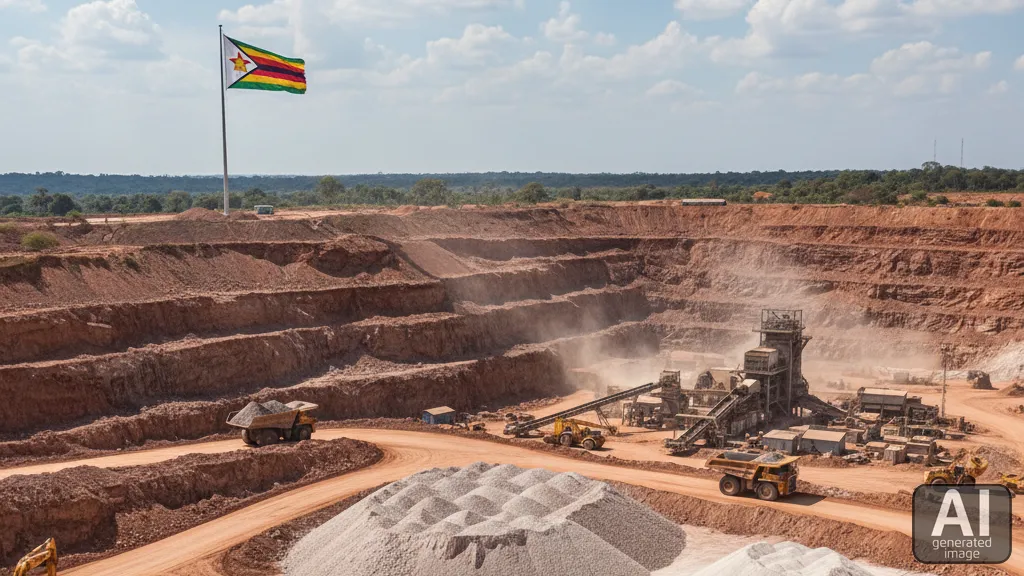Zimbabwe’s Spodumene Exports Surge 27% Despite Weak Lithium Prices

Zimbabwe boosts spodumene exports despite low lithium prices, advancing major downstream investments and strengthening its role in the global battery supply chain.
Zimbabwe has reported a notable increase in spodumene concentrate exports despite the persistent downturn in global lithium prices. In the first nine months of the year, shipments expanded from 784,746 metric tons to 1 million metric tons, representing a strong 27 percent rise in output. This trend reflects the scale and intensity of recent investments in Zimbabwe’s lithium sector, particularly by Chinese firms that have rapidly ramped up extraction and processing capacity since 2021. Although export earnings declined due to weaker international prices, the country’s expanding production base highlights its commitment to consolidating its role within the global lithium supply chain.
The decline in export revenue, which fell 11 percent to 386.9 million dollars, is closely tied to the broader slump in lithium prices. Lithium carbonate spot prices have collapsed to roughly 11,000 dollars per ton compared with highs of around 70,000 dollars in early 2023, largely because of oversupply in key markets such as China. Even so, Zimbabwe’s producers have increased their output volumes as they seek to maintain cash flow, optimize economies of scale, and position themselves strategically for an eventual market recovery. The dominance of Chinese operators, including Zhejiang Huayou Cobalt, Sinomine, Chengxin Lithium Group, Yahua Group, and Tsingshan Group, has been instrumental in driving this expansion. These companies have collectively invested more than 1.4 billion dollars to acquire and develop Zimbabwe’s lithium assets, transforming the country into a major spodumene source in southern Africa.
The government’s long term industrial strategy is becoming more evident through its plan to ban lithium concentrate exports beginning in 2027. This policy aims to encourage local beneficiation, increase value addition, and strengthen Zimbabwe’s ability to capture greater economic returns from its mineral endowment. Chinese companies have already reacted to this policy trajectory by committing substantial capital to downstream facilities. Huayou is completing a 400 million dollar processing plant expected to produce 50,000 tons of lithium sulphate next year, while Sinomine is preparing a 500 million dollar lithium sulphate facility at the Bikita mine. These developments indicate a decisive shift from simply exporting raw ore to establishing midstream processing capacity that can supply battery grade materials to global markets.
The continued rise in spodumene output amid weak prices suggests that Zimbabwe is pursuing a long term, structurally focused strategy rather than responding to short term price cycles. By expanding production, deepening investment partnerships, and accelerating downstream capacity, Zimbabwe is improving its resilience and preparing for a future rebound in global demand driven by electric mobility and energy storage technologies. This trajectory could significantly enhance the country’s economic leverage within Africa’s mineral economy by advancing local beneficiation and strengthening regional competitiveness in the critical minerals sector.
Mini Glossary
- Spodumene: A lithium rich mineral that is processed into concentrates used for battery materials.
- Beneficiation: The process of improving the economic value of ore by refining or processing it locally.
- Downstream processing: The conversion of raw minerals into higher value products like lithium sulphate or battery chemicals.
- Spot prices: Current market prices for immediate delivery of a commodity.
- Economies of scale: Cost advantages gained by increasing the scale of production.
